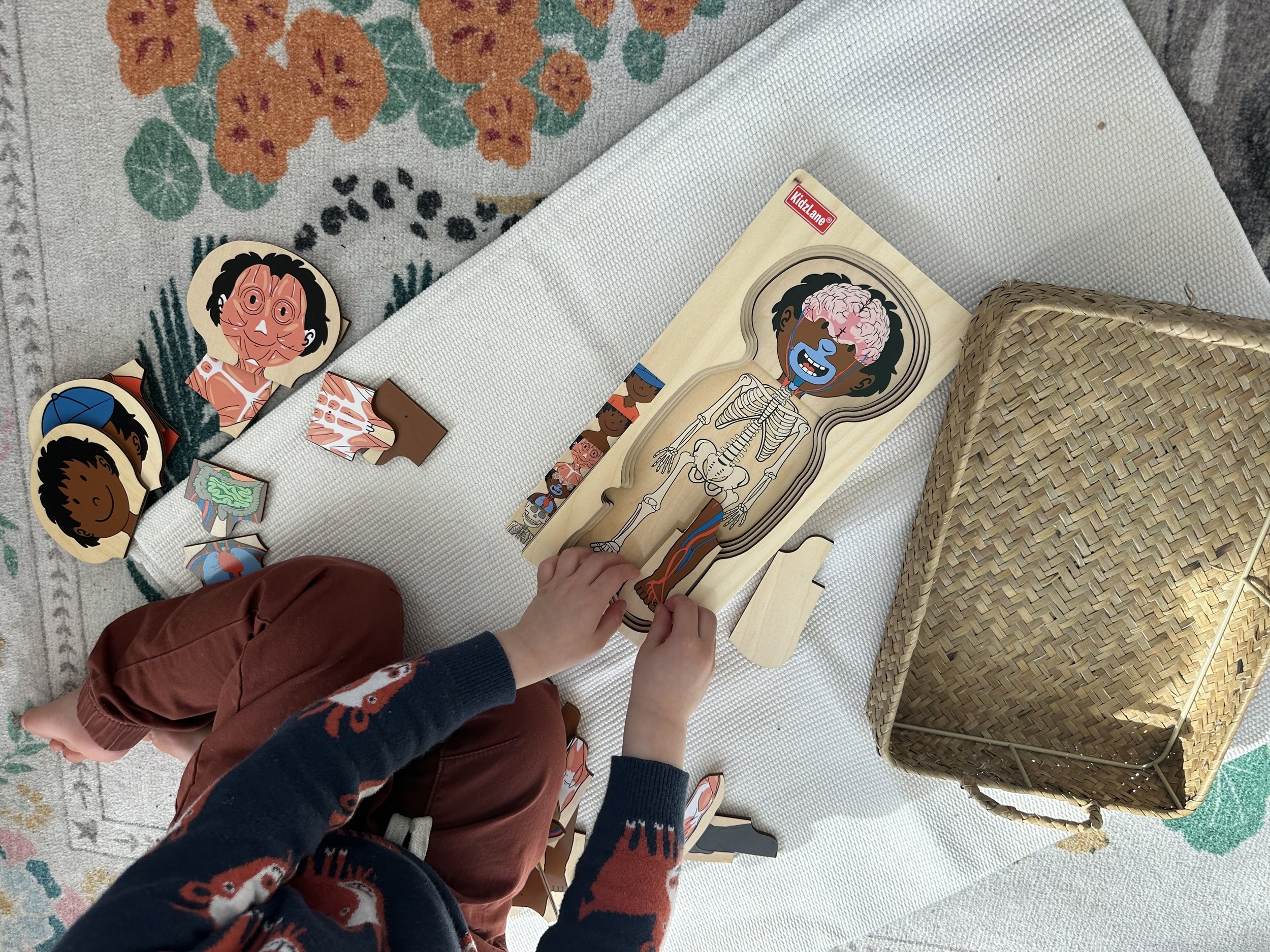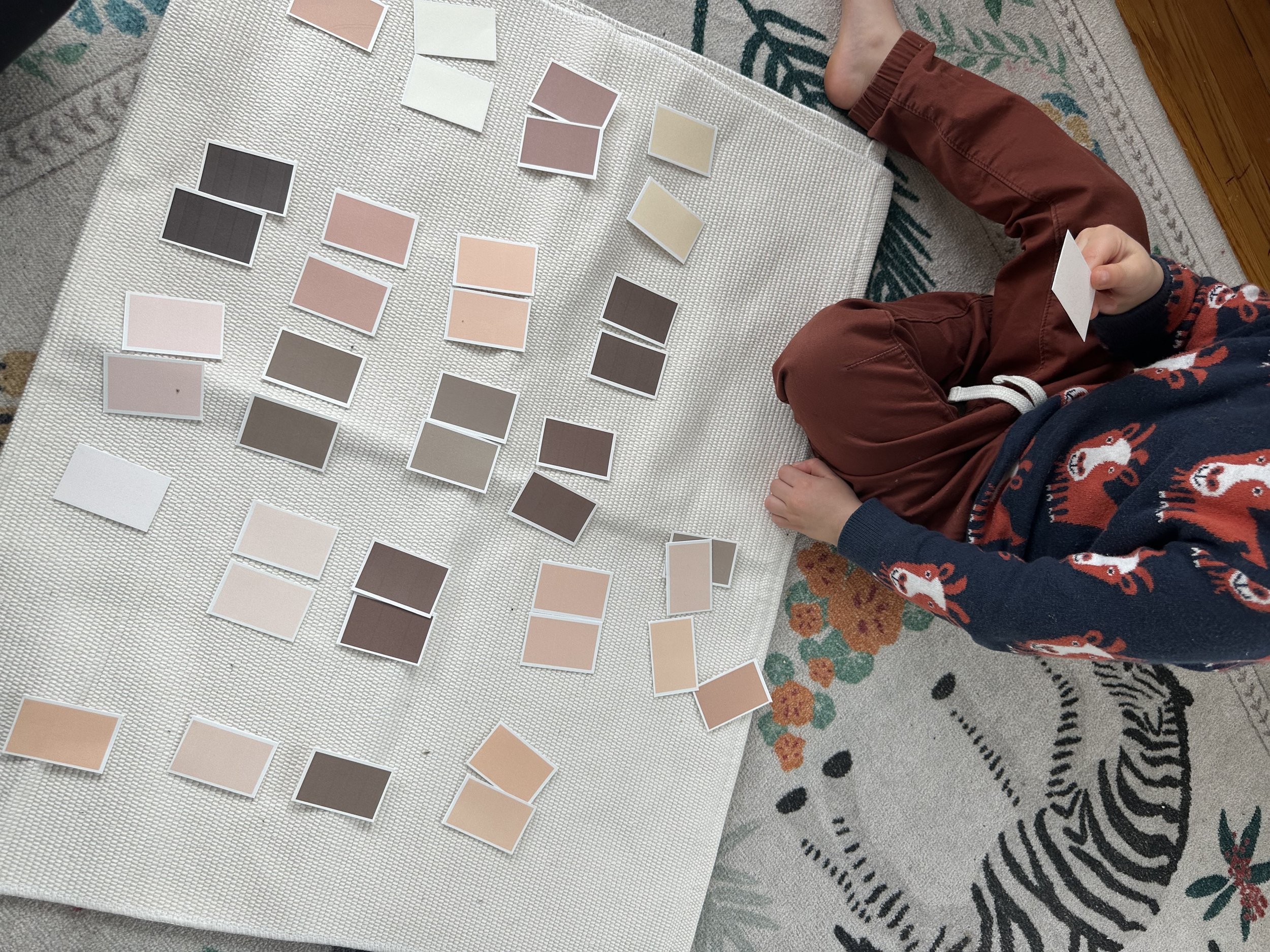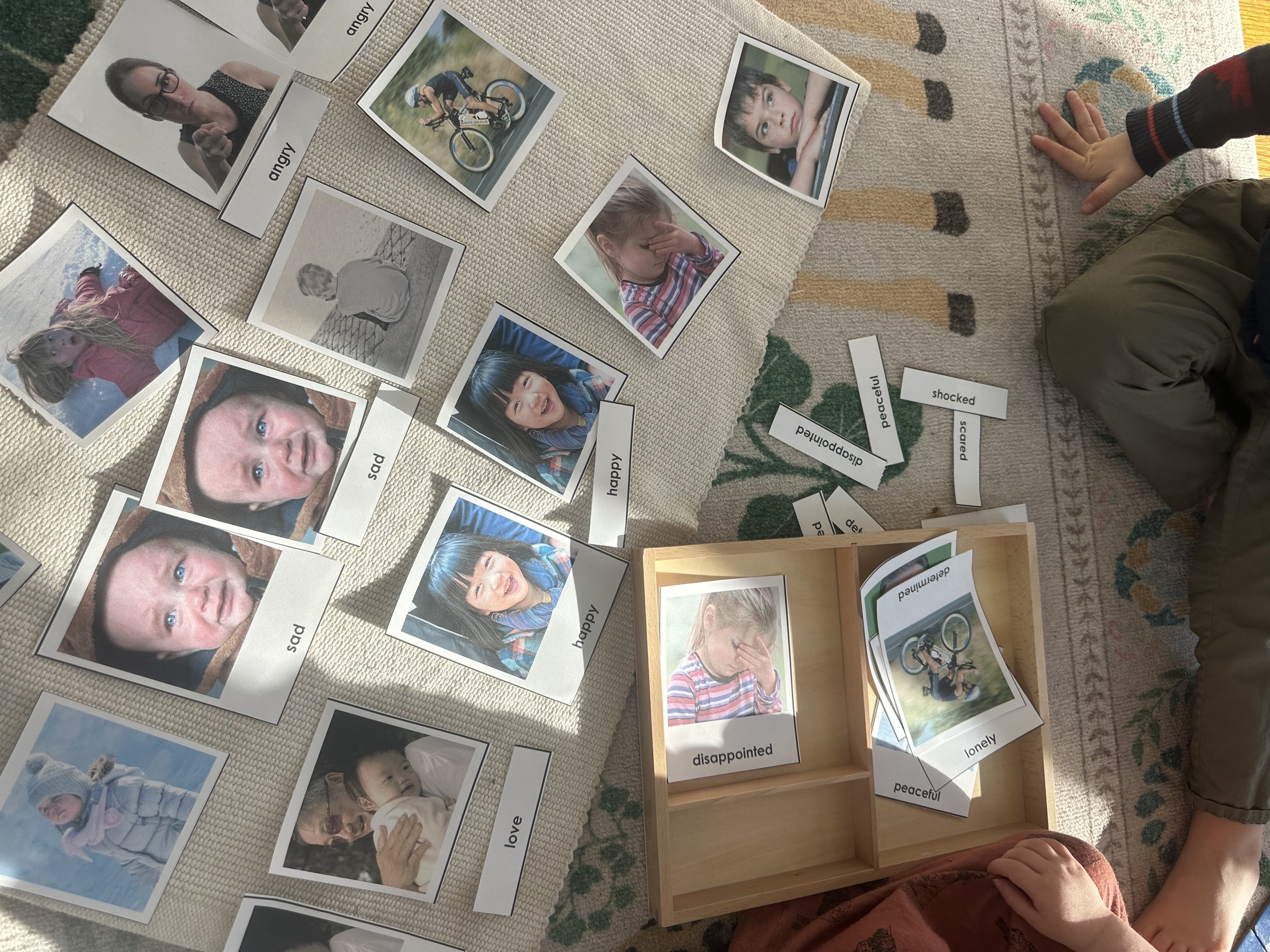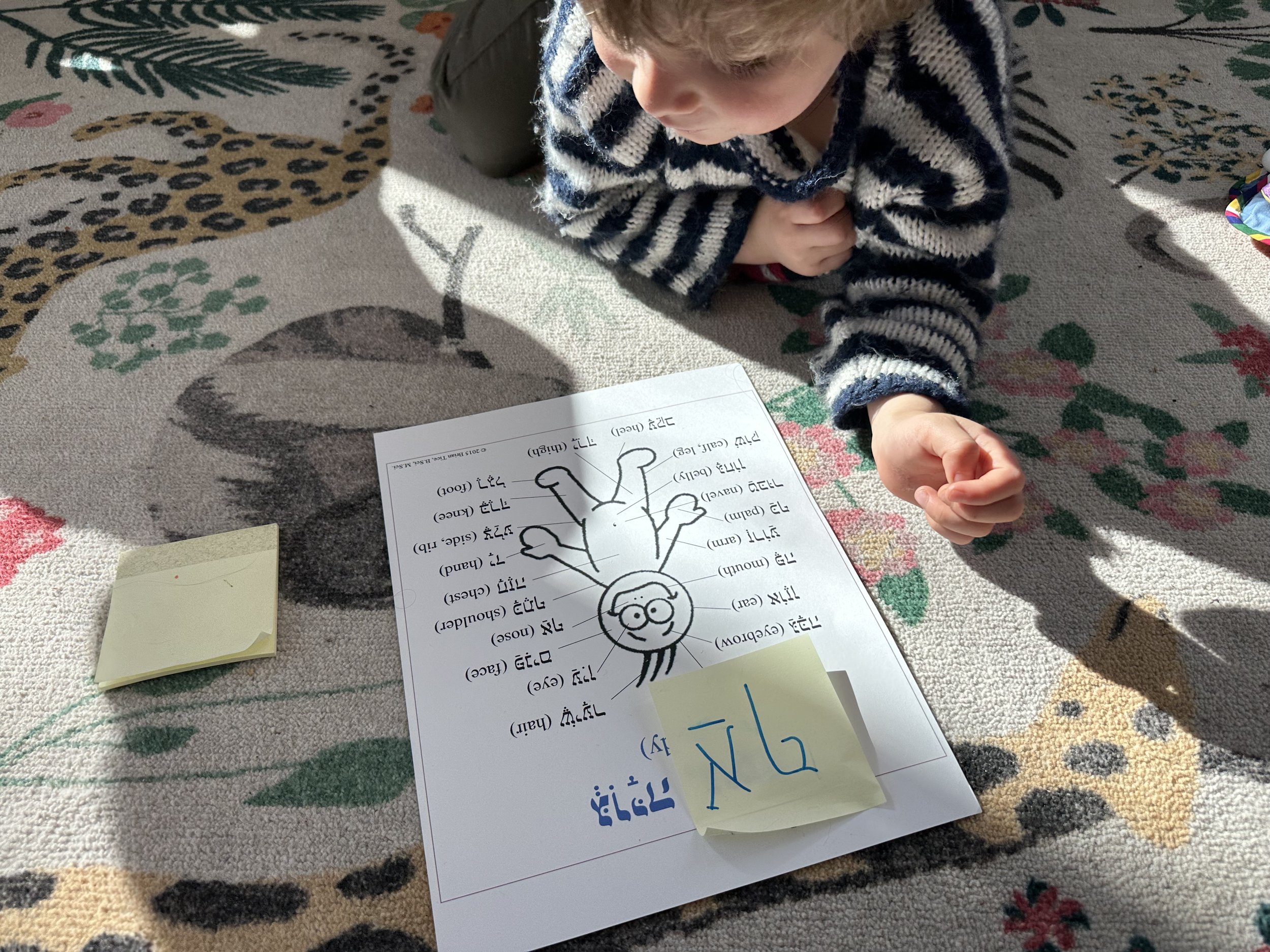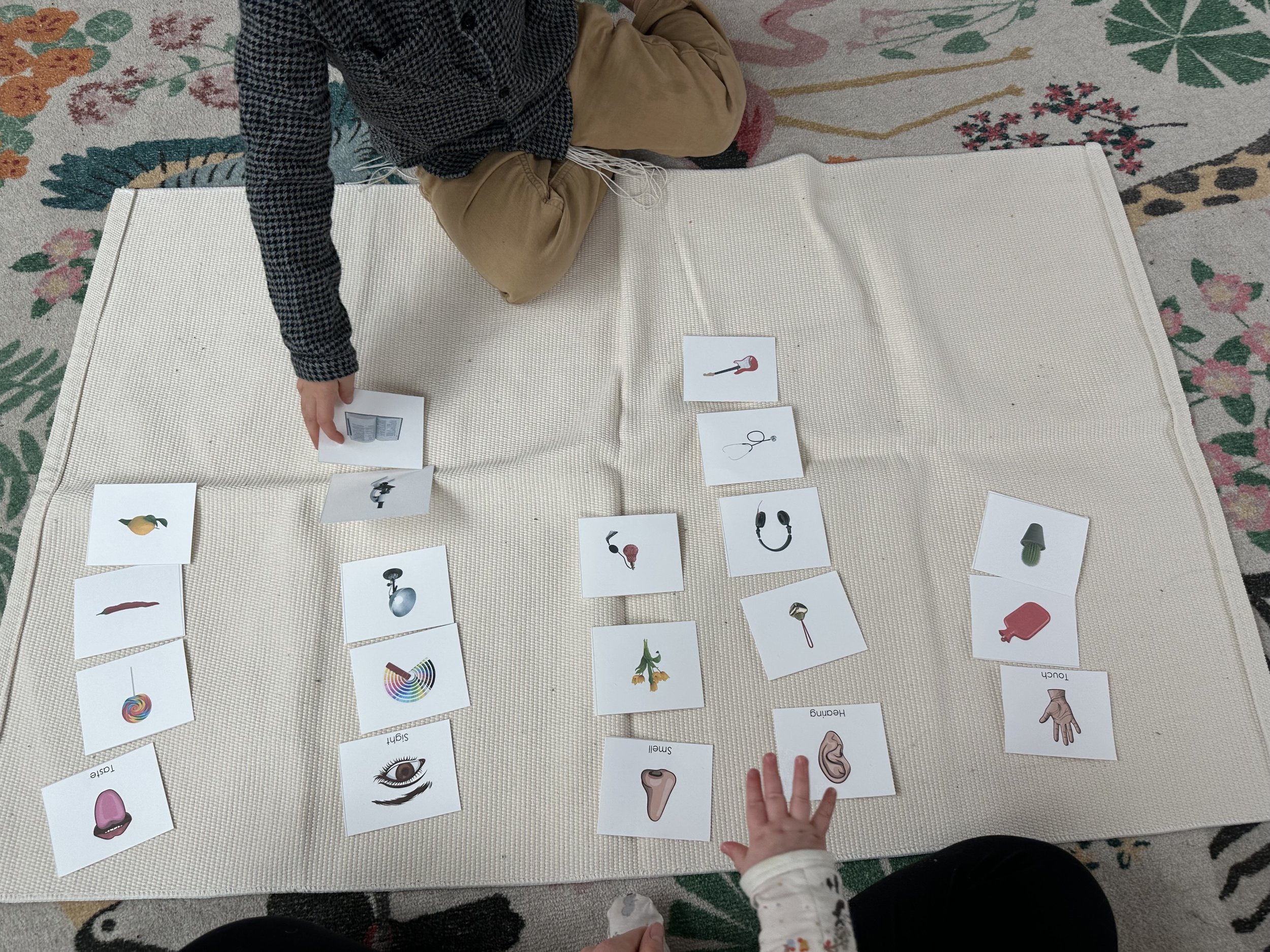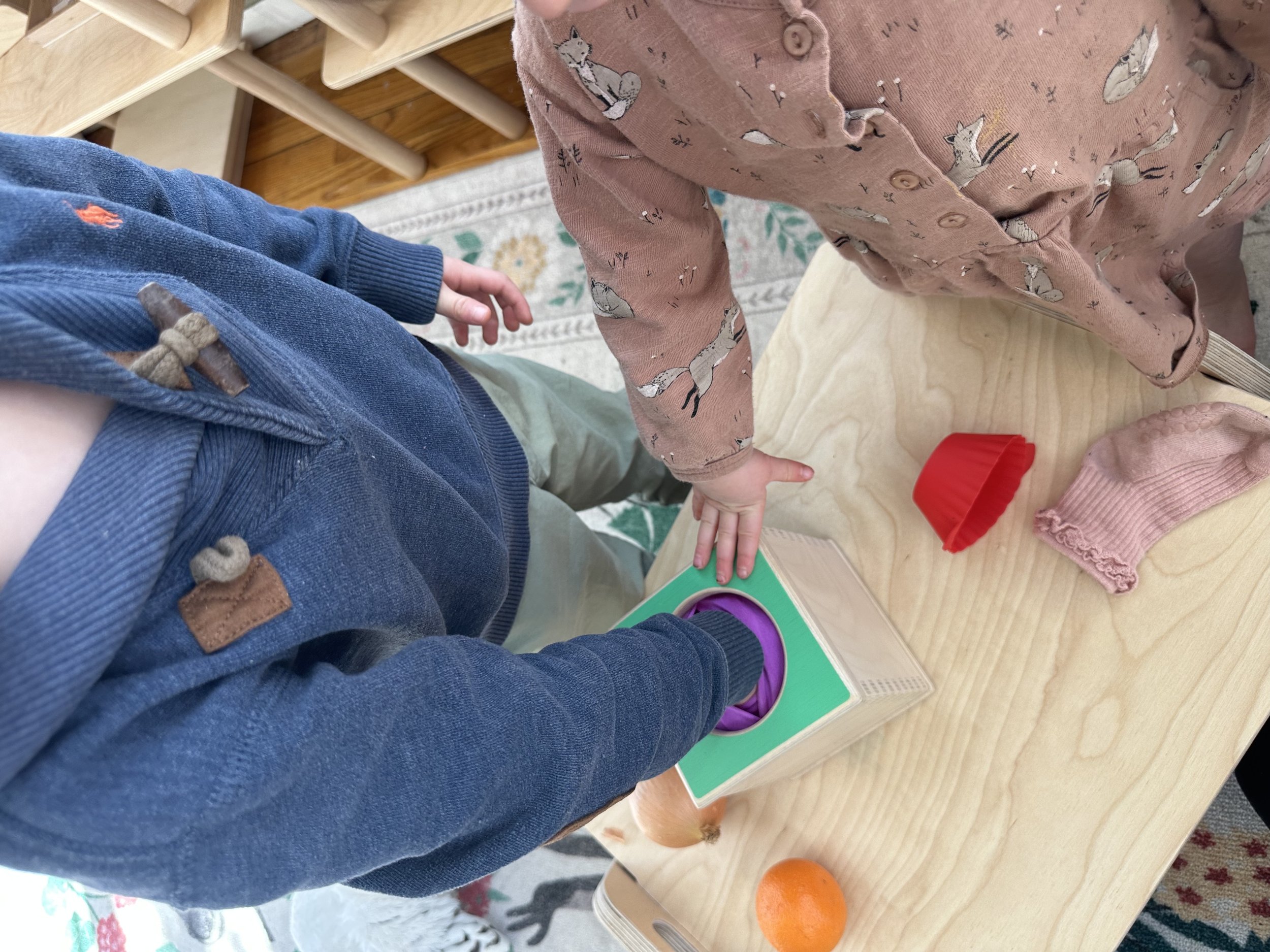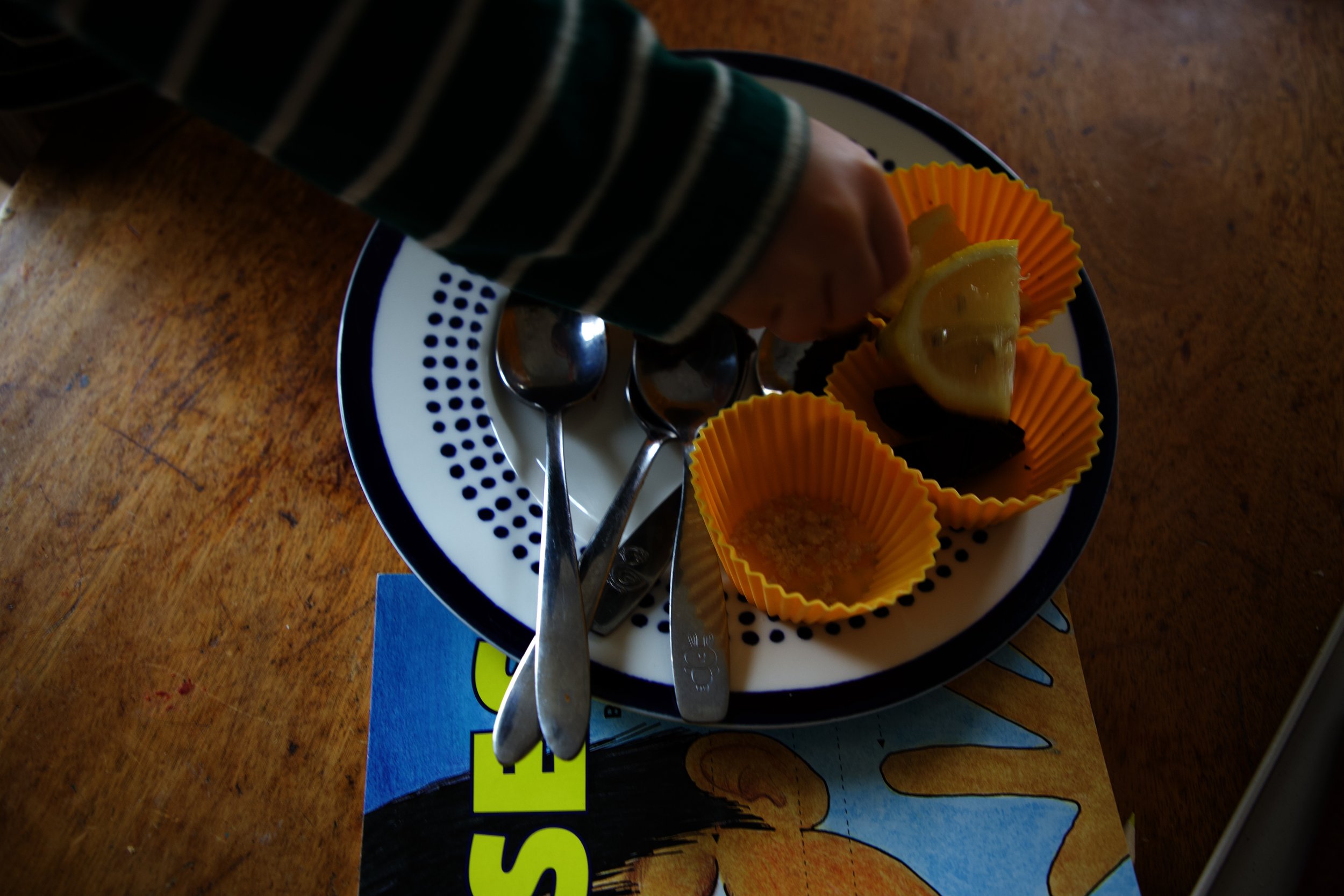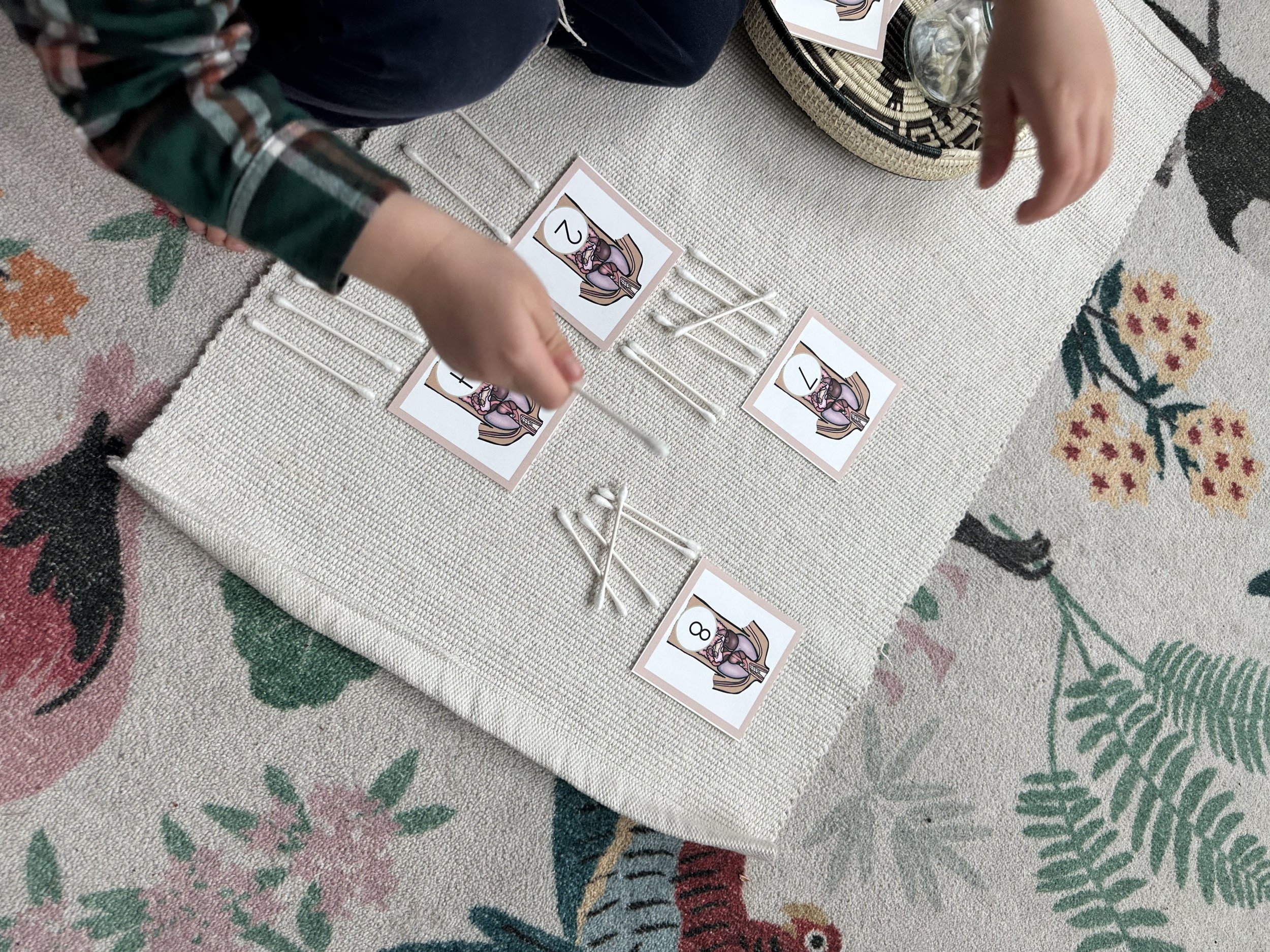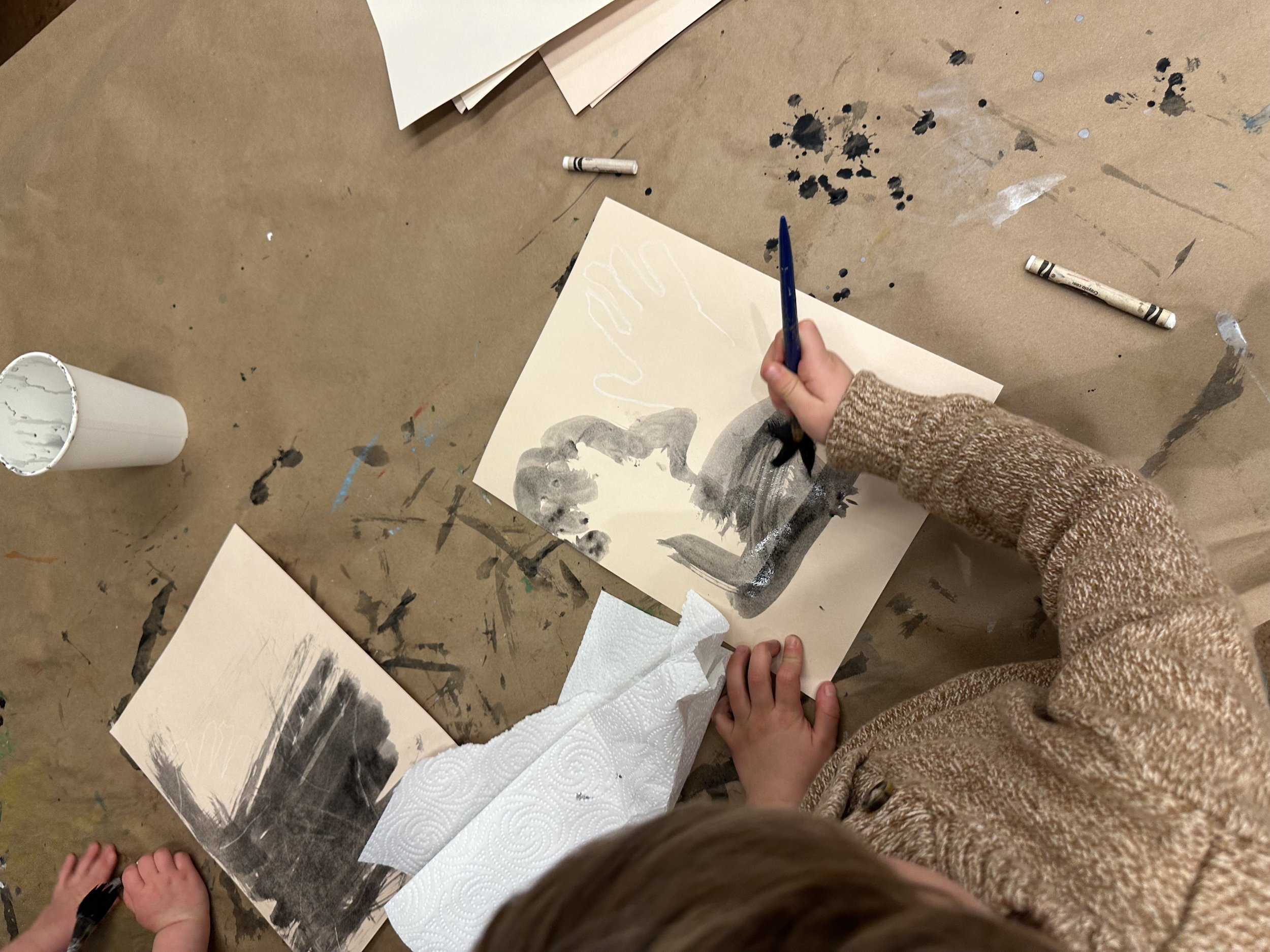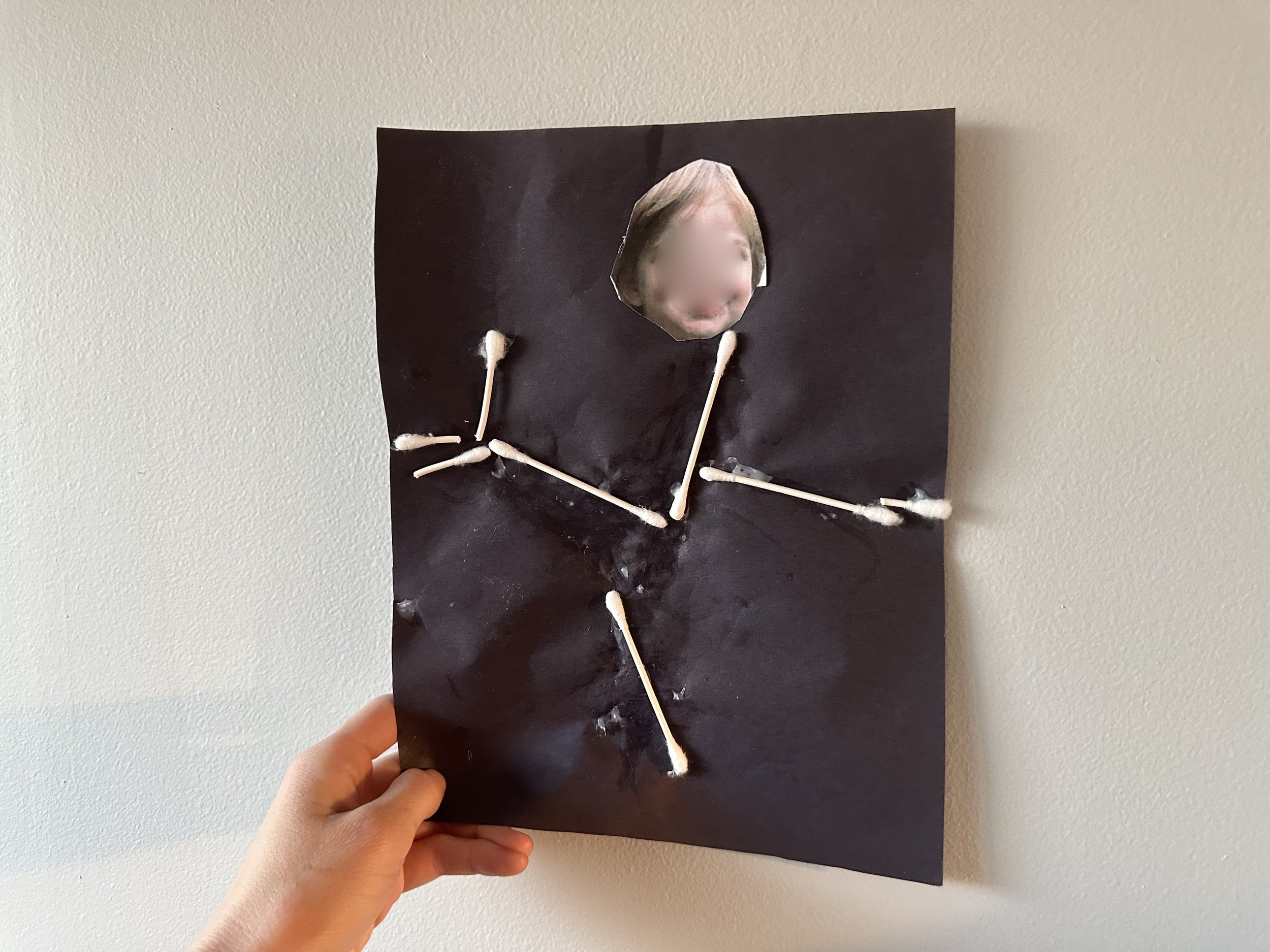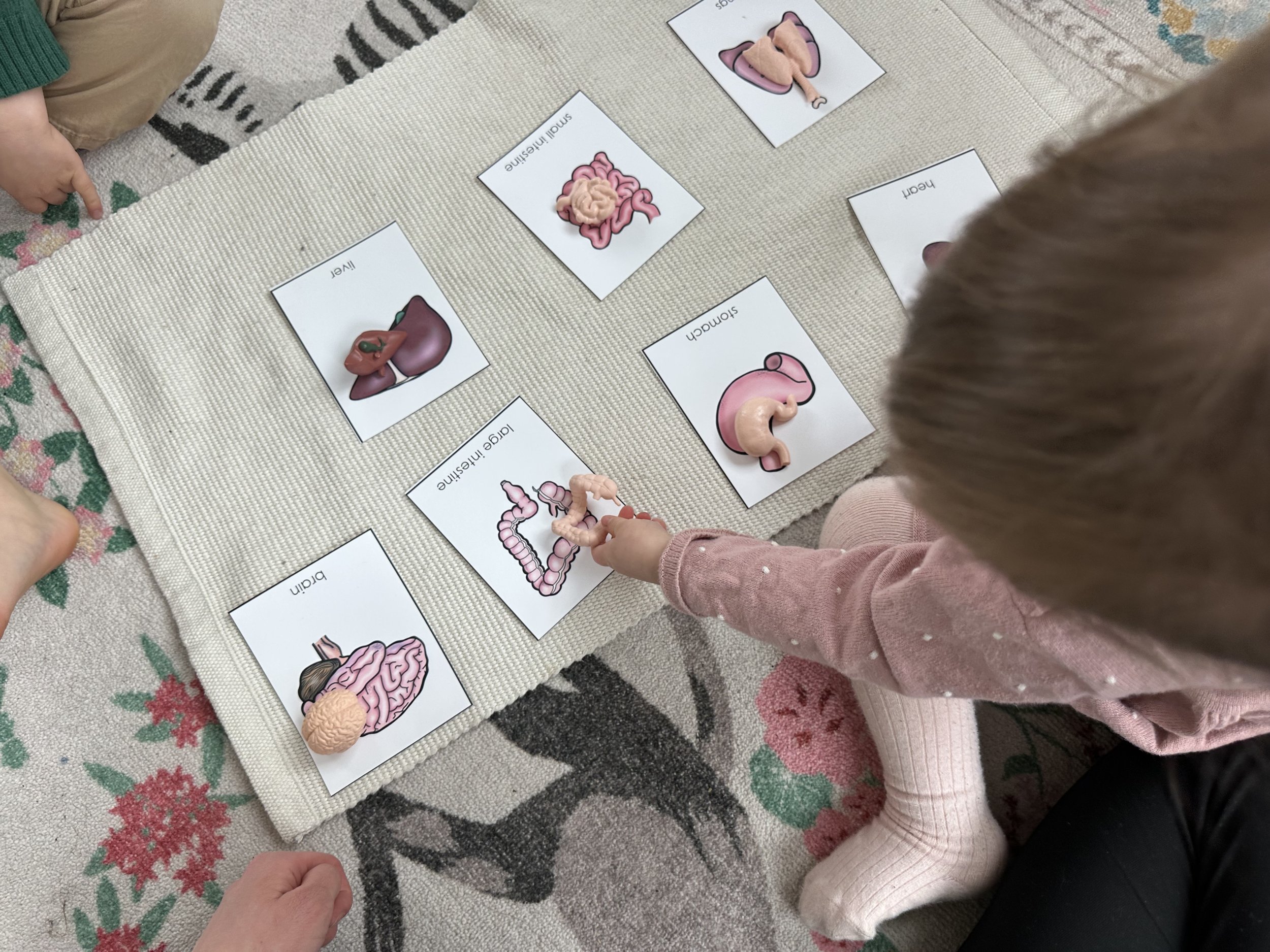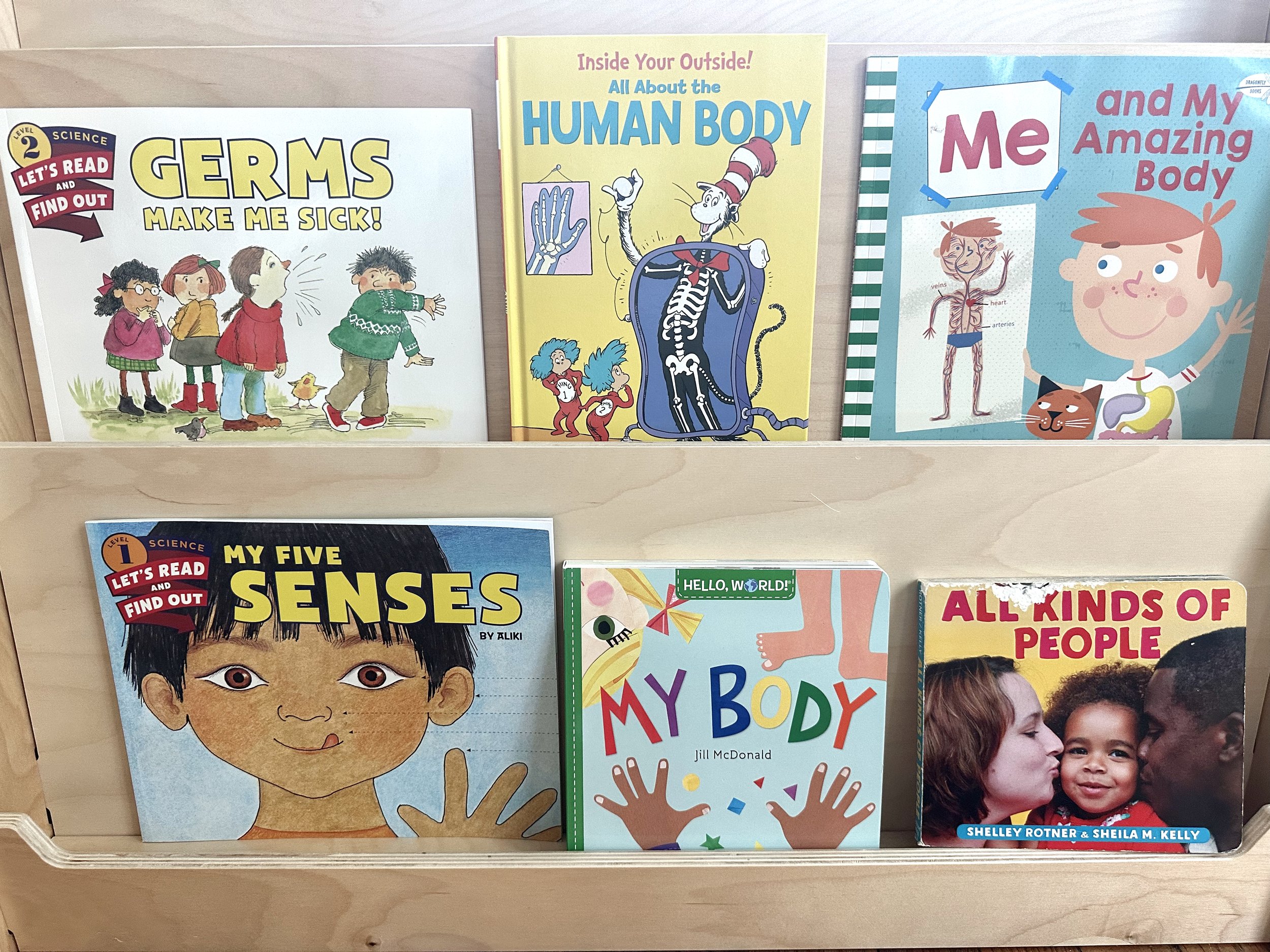Human Body Pre-K Unit
This post may contain affiliate links, which means I may earn a small commission if you buy through my link but does not change your price.
We recently completed a Montessori-inspired human body unit study and had the best time! As always, I learned some stuff right alongside my children. I have two children, ages 2 and nearly 4 at the time of this study (well, I also have a baby, but he wasn’t involved other than hanging out!). We practice Montessori at home and do Pre-K at home.
We started our human body unit study with the outside of our body. My son, and to a lesser extent my daughter, knew most of the outside body parts, but this was a chance to learn a few new ones, review, and learn them in our second language (Hebrew). We sang some classic body songs, including Head, Shoulders, Knees and Toes; One Little Finger; and the Hockey Pockey. I also traced their bodies on easel paper. We used those outlines through the rest of our unit studies. I am breaking this post into different parts of the body rather than academic subjects this time as we focused on different parts at different times. We started with the outer body, moved to senses, then learned about the skeleton, and finally our organs.
One thing we liked throughout the whole unit was our human body layer puzzle. This went out at the beginning of the unit and was explored throughout the whole unit. As a puzzle it was too easy for my 4-year-old and too hard for my 2-year-old, but it was still a wonderful learning tool
Human Body PreK Study: The Outer Body
Body trace
We started our human body studies with a large trace of both kids’ bodies. These got used throughout our unit study over and over again. I had them lie down on easel paper and I traced along their bodies. These were FAR from perfect but they worked well for our needs. We then discussed the different parts of our body represented on the picture.
Measuring our bodies
We took those same body traces and used them to measure our bodies. First, we used unit blocks to measure them. My son saw concretely how many more units tall he was than his sister. Then, he wanted to use the tape measure so he measured them again in inches.
Skin color match
This sensorial activity worked on matching different skin tones. This is advanced color matching work. We used it to discuss how skin comes in all colors. It was cool seeing my son work through matching the tones and self-correcting when he had made a match that wasn’t correct.
Emotions 3-Part Cards
While 3-part cards are not our favorite in our home, we used these during our morning basket/circle time as a group. I had my son find the matching word and my daughter find the matching picture to the control card. This allowed both children to be involved and we discussed different emotions and what might lead to those emotions/how we should respond. It was funny watching my 2-year-old insist that the baby crying was her baby brother and that he wanted to be picked up (accurate to what we do when he starts to cry!).
Human body pin pushing
This is a classic Montessori activity to work on fine motor skills. Honestly, it is not one of my son’s favorites usually so I was surprised how focused he was on this one. He went all the way around a few times to get the body to pop out. How this works is you have to push very close together in order for the body to pop out. This needs to be closely supervised as the pin is sharp.
Label the human body
We did a few activities labeling the human body with a control. We did this in our second language (Hebrew) in order to gain some Hebrew vocabulary. For an early reader, or a child who is not yet reading but can identify letter sounds, this can also be a way to practice reading words. Since my son can easily read at this point, doing it in our second language made more sense! He practiced his Hebrew reading and gained some vocabulary. First, we labeled a worksheet that corresponded exactly with the control. Then, I wrote the body parts on post-it notes. He found the word on the control then labeled the spot on the large body outline we did.
Human Body PreK Unit: Senses
Following our studies of the outer body we moved to discussing our senses. We started by discussing what different body parts do. For example, we discussed how we see through our eyes or hear through our ears. I felt this was a good way to move from the more concrete to abstract (how it works in Montessori!). Concretely, my children can feel their ears and know where they are. The idea of hearing is slightly more abstract and it opened the door to discussing how those senses work. This was a particularly fun part of our unit studies as we traveled through each sense for a day.
Senses sort
First, we started by sorting how we experience different sensations by the sense we use. For example, we use our sense of taste to taste the lemon or our sense of hearing to listen to a bell. This was an opportunity to use some new vocabulary, as at times we discussed things my son was not familiar with.
Smelling bottles match
I made DIY smelling bottles a year ago with essential oils. They haven’t gotten a ton of use but I pulled them out during this unit to practice our sense of smell. There are two of each scent (I used cinnamon, orange, lavender, tea tree, and cloves) and the goal is to match the two with the same scent.
Guess the object
We used the old magic tissue box we have for my babies as a touch and feel box. I put objects inside and had them reach in to feel and identify the object without looking. My children loved practicing their sense of touch here and wanted to do it again and again.
Identify the instrument
To practice our sense of hearing, we played identify the instrument. I had them turn away and played a note on an instrument. Their goal was to identify which instrument I had played! They were familiar with most of the instruments but I made sure to go through each before so they were familiar with all of them!
Taste test
No question, this was my children’s favorite day of the whole human body unit. I set up a taste test to experience the different flavors. We included all the basic flavors: lemon for sour, 90% chocolate for bitter, miso for umami, salt for salty, and dates for sweet. They had the best time sampling the different flavors!
Human Body PreK Study: The Skeleton
Next up, we discussed our bones! This is more abstract for children as they likely have never seen their bones. However, they can feel them, unlike most of their organs. We discussed how bones give our body support and read this book.
Life-size puzzle
Again, we used our human body outlines, taking large skeleton pieces and matching them using a control sheet. This was very cool for my son to actually see where each bone was on his full-size body outline! At the same time, we found the location of each bone in our own body.
Bone tally marks
My son has been learning about tallies and Q-Tips make the perfect “bones.” I printed human body number cards and set them out with Q-Tips for him to make tallies matching the number on the card. You could skip the tally aspect for a child learning numbers and just have them find the right number of “bones” for each card.
Hand “x-rays”
This was a lucky coincidence: we were at the Met and they had a children’s art activity going on. It happened to be creating art inspired by the x-rays in their collection! They gave white crayons so we traced our hands with the crayons, drew in some bones, then painted over with a black paint (I believe it was black liquid watercolor but it could have been something else). I felt lucky this happened to be happening on the day we were there, but it could be done at home, too.
Q-tip x-ray skeleton
I printed a picture of each of my kids’ faces and had them make an “x-ray” skeleton using Q-tips. I cut out my daughter’s face for her but had my son cut out his own face. They glued them on a black paper. They then glued on the Q-tips to make their skeletons. My son enjoyed breaking some for smaller bones. He’s not a huge craft kid and he didn’t add a ton of details here, but I was still glad we did it.
Human Body PreK Unit Study: Organs
Finally, we moved on to our organs. I got some organ figurines and this was the focal point of this part of our learning. Ideally I would have spent a bit more time on this unit but I also try to align our learning with the Jewish holiday calendar and I needed to start teaching about Passover! I would have done some specific activities focused on the heart and perhaps the digestive system if had more time though.
Object to picture matching with organs
Object to picture matching is one of my favorite activities for toddlers from around 18 months to around 3. This one I would recommend on the later side of that as the pictures are going to be more challenging to match and the vocabulary is more abstract. I would focus on things like animal matching at the beginning. Since this one was more abstract, even my nearly 4-year-old enjoyed it, while generally object to picture matching is boring for him. We did this a few times together during morning group time so that I could teach both children together about the organs. They took turns matching them and I showed them where they were inside their actual body. It was also kept on the shelf for them to do independently.
Organs song
I am sure there are actual organ songs out there but I just started singing “brains, lungs, heart, and stomach” to the tune of “head, shoulders, knees, and toes.” I put my hands where each of the organs is inside while singing. My children enjoyed and I found my son singing it again himself at other times.
What am I? game
We do these for most of our unit studies and I just love them as a way to practice our new knowledge! We did this one at the end of our unit study and I loved seeing all my son had learned!
This puzzle is life-size and very cool but also very tricky. My son is incredibly good at puzzles and did not find it easy. It is a great puzzle to work on together though!
Human Body Books for Pre-K
As always, books are a big part of our unit study. This topic is a bit harder to find beautiful fiction, but there were a lot of good nonfiction books we found. I’ll be honest, these were not my favorite unit themed books to read, but that doesn’t change their value.
Hello World: My Body: I really like this series of books. They are in board book format but still have wonderful nonfiction information for children. We have several and this one did not disappoint.
Me and My Amazing Body: We have most of this set as well and have enjoyed them all. This gives an easy to understand introduction to the human body for young children. It gives an overview of different parts of the body, inside and out, and the bodily systems.
See Inside Your Body: I am not a huge lift the flap book person, but this is a great one. My son really enjoyed going through it independently, reading about the different parts of the body, and discovering inside.
All About the Human Body: This is from the Cat in the Hat science series. It is a bit more narrative than most, which can be fun for young children.
The Skeleton Inside You: A lot of of our books for this unit came from Let’s Read and Find Out. This publisher has great science-focused books for young children. This one was a good introduction to the skeletal system.
My Five Senses: This is also from the Let’s Read and Find Out series but level 1. It is simpler than the skeleton book and doesn’t have as much information but still has some good learning.


